Located about 30 kilometers northwest of Barcelona, Montserrat is one of Catalonia’s most popular destinations for both locals and tourists.
Translating to “saw mountain” in Catalan, the Montserrat mountain range owes its name to its jagged, sawtooth appearance and is considered one of the most famous in Catalonia, Spain. The peculiar shape of its pointy peaks is the result of millions of years of water erosion, as the seabed was formed with various types of rocks with different resistance levels.
Easy to reach, a Montserrat tour is one of the best day trips from Barcelona. Offering visitors a chance to experience its natural beauty, spiritual significance, cultural heritage, vineyards and gastronomy, and outdoor activities, this unique area really should be on your list.
Check out our comprehensive guide to visiting Montserrat and start planning your escapada!
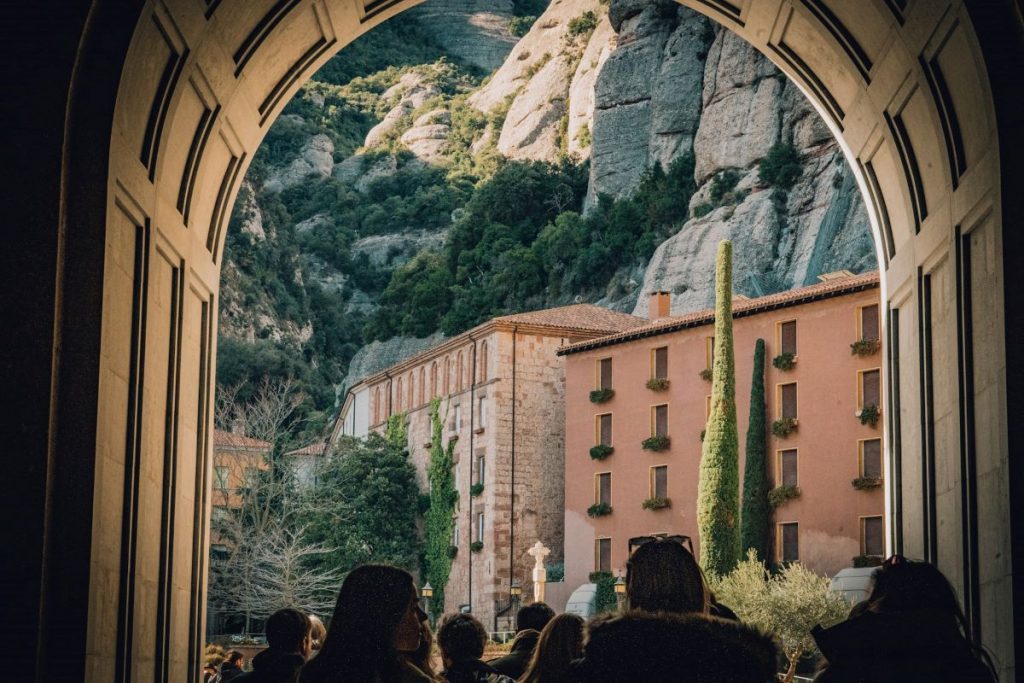
How to get to Montserrat, Spain
Train and cable car
The easiest way of traveling to Montserrat from Barcelona on your own is by train, which you can catch from the Plaça Espanya station. Connected by the green and red metro lines, it is easily accessible from any part of the city.
Once at Plaça Espanya, take the R5 to Aeri de Montserrat, where you’ll then take a cable car up to Montserrat. The journey will take approximately one hour, and has affordable one-way, or round trip tickets. At Aeri de Montserrat, you’ll then take a cable car, which will transport you to Montserrat (and provide impressive panoramic views).
The cable car typically runs every 15 minutes but can run as frequently as every 5 minutes depending on the number of passengers. Ticket prices vary depending on if you purchase a one-way, or a return ticket. Combined tickets can be purchased at Plaça Espanya.
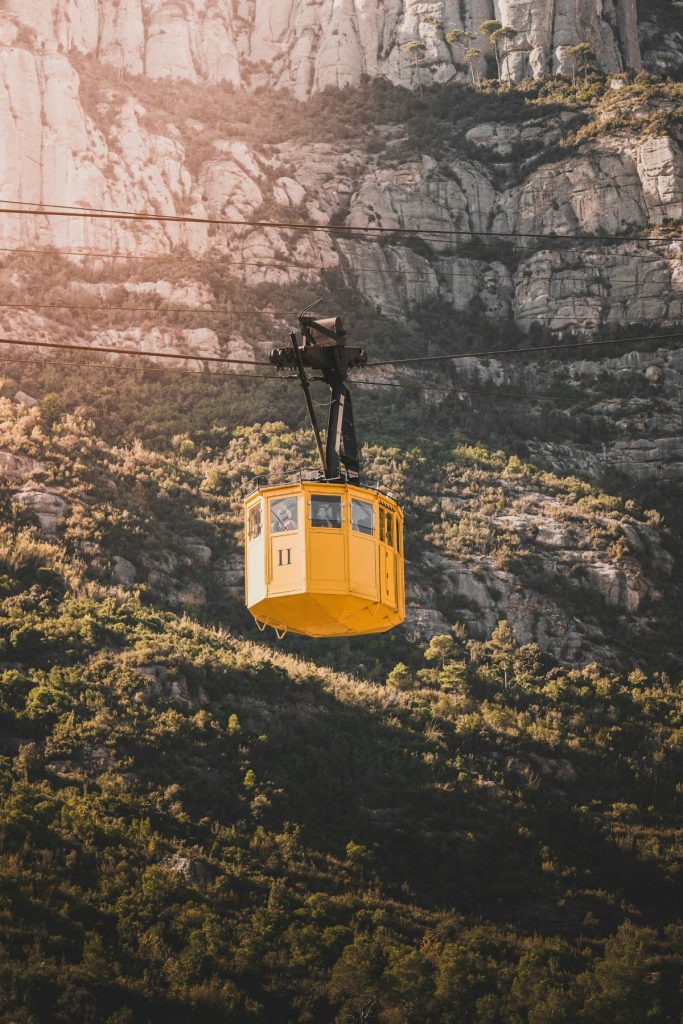
Train and rail rack
Another slightly longer option is the R5 line to Monistrol de Montserrat and then transfer to the rack railway, a green railway that runs to the top of the mountain.
Prices vary depending on the season and if they’re one-way or roundtrip tickets. Combined tickets can be purchased at Plaça Espanya.
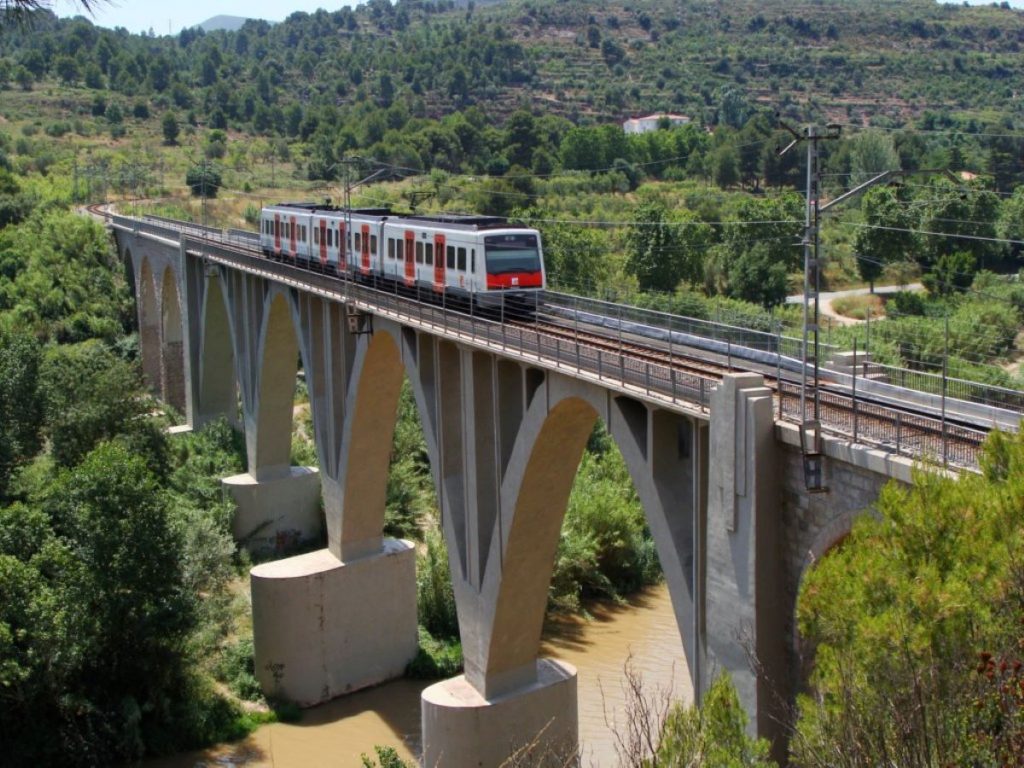
Combined tickets
There are also two combined bundle options for those who want to reserve activities beforehand:
- Trans Montserrat: This combined ticket includes a metro ticket, the round-trip train ticket on the L5 to Monistrol, a round-trip ticket on either the cable car or rack railway, tickets with the Sant Joan and Santa Cova funiculars and entrance to the basilica and Shrine, as well as the Espai Audiovisual of Montserrat.
- Tot Montserrat: The Tot Montserrat bundle includes the same deal as the Trans Montserrat package, in addition to a lunch at the Montserrat Buffet and entrance to the Montserrat Museum.
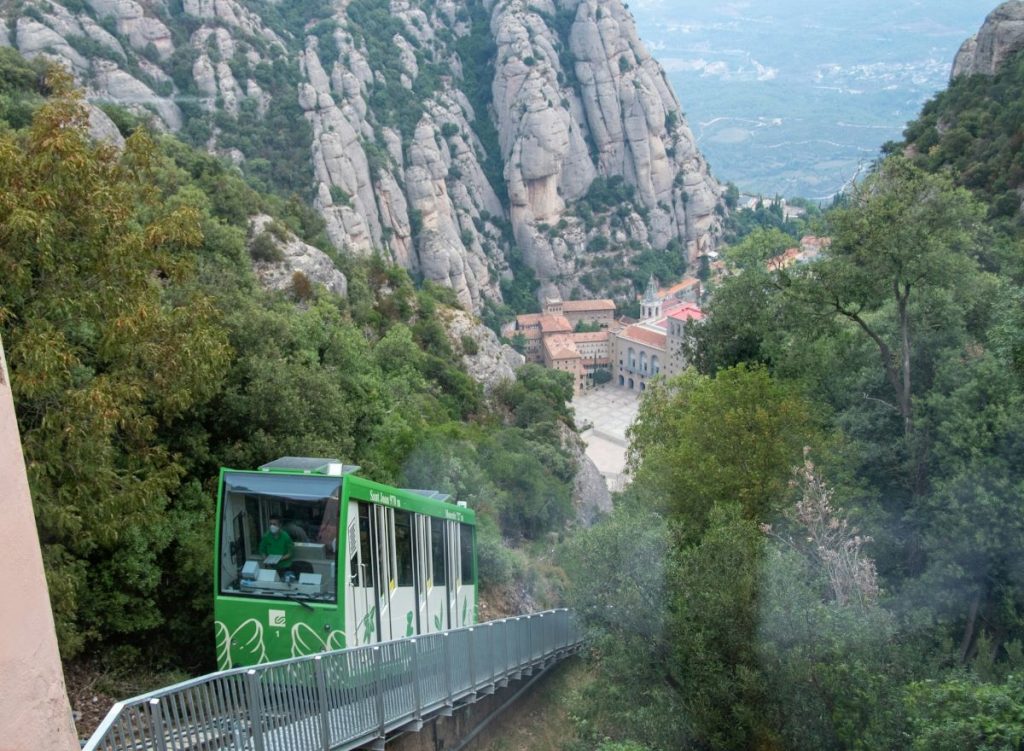
Car
For those who prefer to rent a car and drive, the trajectory from Barcelona to Montserrat is 60km, which should take you a little over an hour. The most direct routes are via the A2 or C-58 highways.
Once at Montserrat, you can either park next to the monastery (in the Patronat de la Muntanya de Montserrat parking lot), or for free at the Cremallera de Monistrol Vila station, where you can then take the rack railway up.
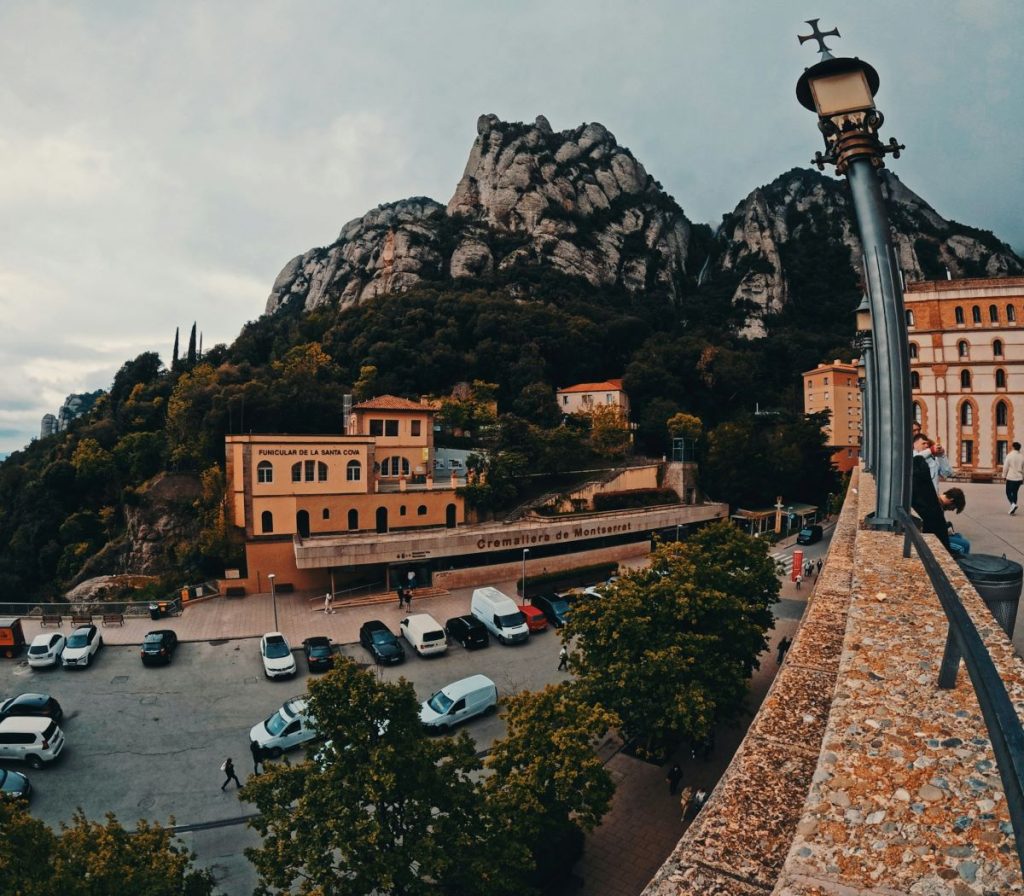
Montserrat Tour: A Day Trip from Barcelona You’ll Never Forget
If you’re looking for the most seamless and enriching way to experience Montserrat, Spain, the Montserrat Tour with Cava & Winery Experience by Walks is the perfect choice. This full-day guided experience whisks you away from the bustle of Barcelona and immerses you in the cultural, spiritual, and culinary treasures of Montserrat—before the crowds arrive.
Travel in comfort via a private, air-conditioned minibus as your expert guide shares insight into Catalonia’s history, culture, and natural wonders along the way. Unlike figuring out train timetables and ticket combos, this all-inclusive tour takes care of everything so you can simply relax and enjoy.
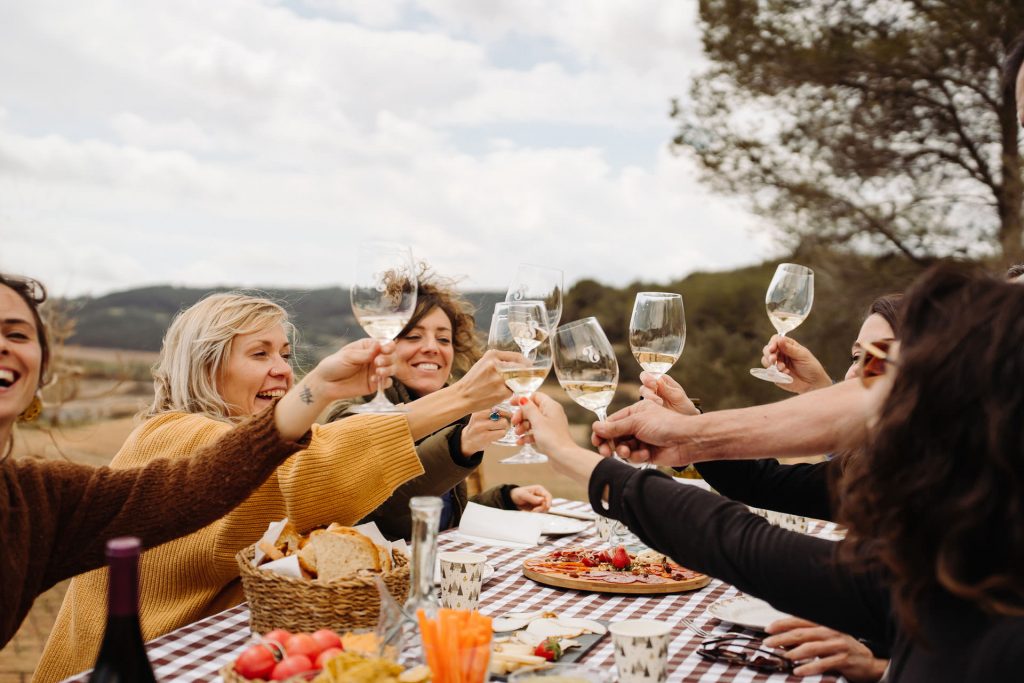
What the Tour Includes
- Early access to Montserrat, arriving before peak crowds
- Guided tour of the Santa Maria de Montserrat Monastery and Basilica
- Visit to the shrine of La Moreneta, the Black Madonna
- Scenic mountain views and time for self-guided hiking or exploration
- Private visit to a local cava winery
- Winery tour with behind-the-scenes look at the cava production process
- Cava tasting of several sparkling wines
- Homemade lunch prepared by the winery owners
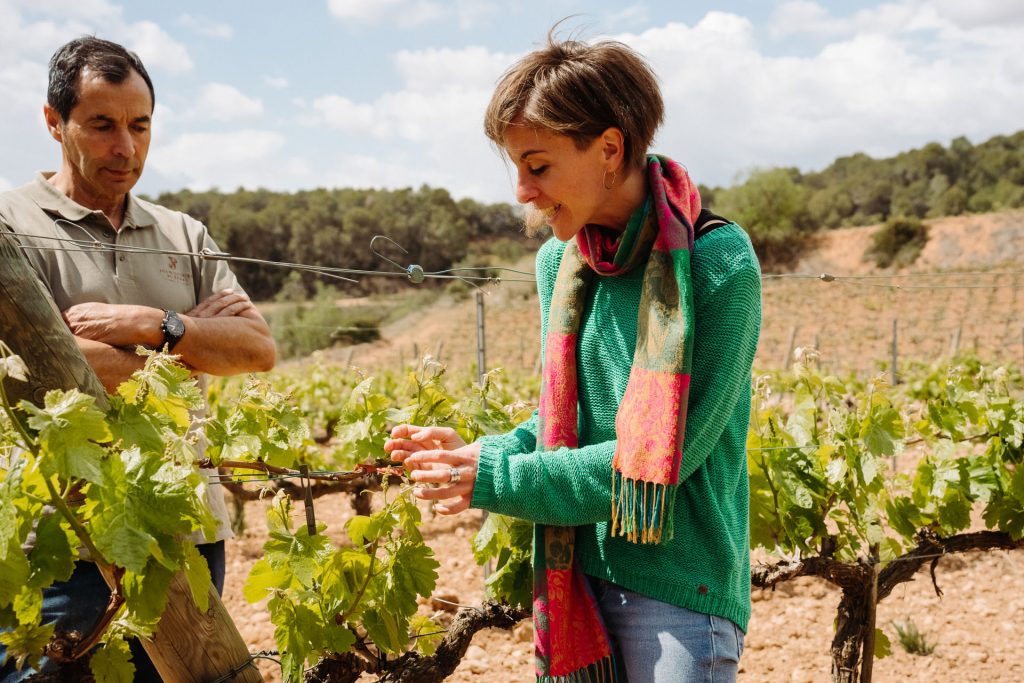
Why This Montserrat Tour is Worth It
Unlike going it alone, this tour adds rich context to every stop. Your guide will explain the centuries-old significance of Montserrat Monastery, help you skip the guesswork of navigating your way through the region, and provide exclusive access to a family-run winery that you’d likely never find on your own.
You’ll not only visit Montserrat, Spain’s most iconic mountain, but also taste its terroir—through expertly crafted cava and authentic Catalan cooking. It’s a true blend of nature, spirituality, and local flavor.
✨ Don’t miss out—reserve your Montserrat Day Trip now and see this Catalan gem the right way. Book the Montserrat Day Trip Tour Here
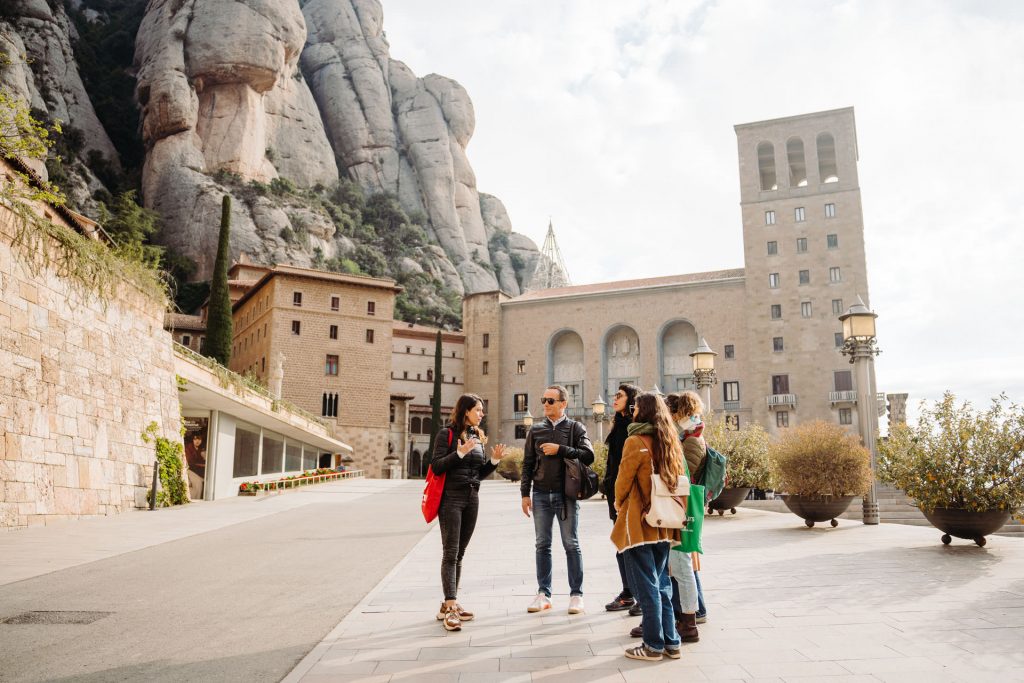
Bus
Autocares Julia offers a regular daily service to Montserrat from Sants Estació, which leaves every day in the morning.
The journey time is approximately 1 hour and 25 minutes. The return time varies during the winter/summer seasons, so make sure to check the timetable.
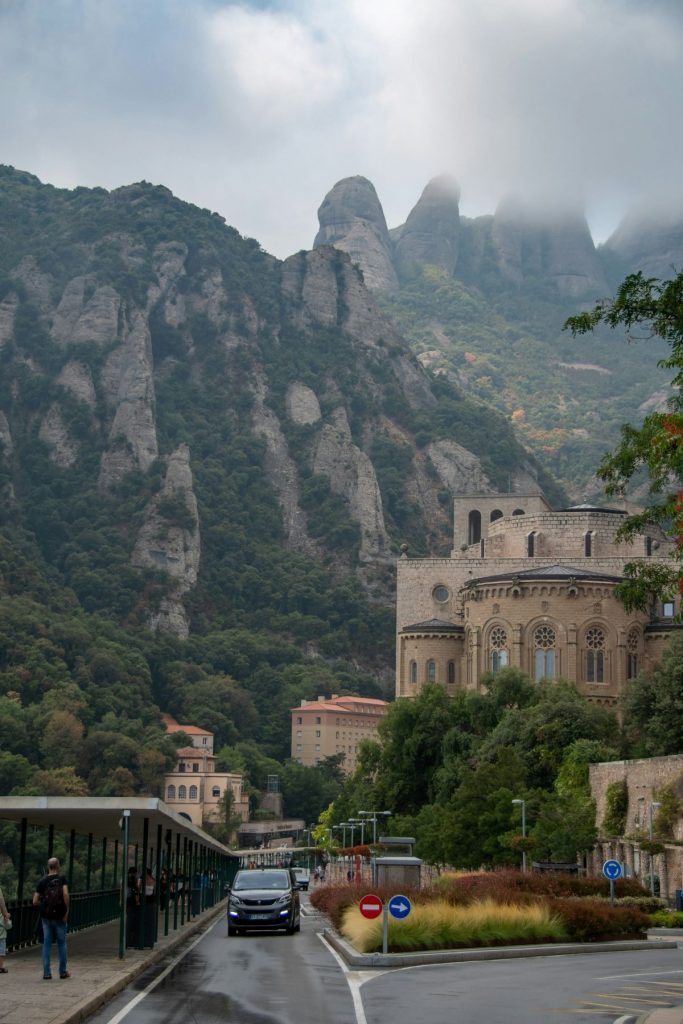
What is there to do in Montserrat, Spain?
Santa Maria de Montserrat Monastery
No trip to Montserrat is complete without visiting the Monasterio de Santa Maria de Montserrat, a Benedictine monastery perched within the mountain range. It houses a famous Romanesque wooden carving of the Virgin of Montserrat known as La Moreneta, due to its dark tone.
The origin of the sanctuary dates back to the late 9th century, when, according to the legend, a group of shepherds found an image of the Virgin of Montserrat. While the exact dates are uncertain, it is believed that the monastery was founded in the early 12th Century. You’ll find La Moreneta in the Monastery’s basilica.
Other areas worth checking out are:
- The Monastery’s cloister, as well as its library, which features a collection of over 300,000 volumes and its own publishing house.
- Montserrat also features the oldest boys’ choir in Europe, which can still be heard during mass at the basilica, throughout the week and on Sundays.
While you can get access tickets directly at Montserrat, we recommend reserving beforehand online, as lines tend to build up. Visitors who come on our Montserrat & Cava Winery Tour will get to explore the heritage site with an expert guide that provides an in-depth overview on the Monastery’s religious and historical significance.
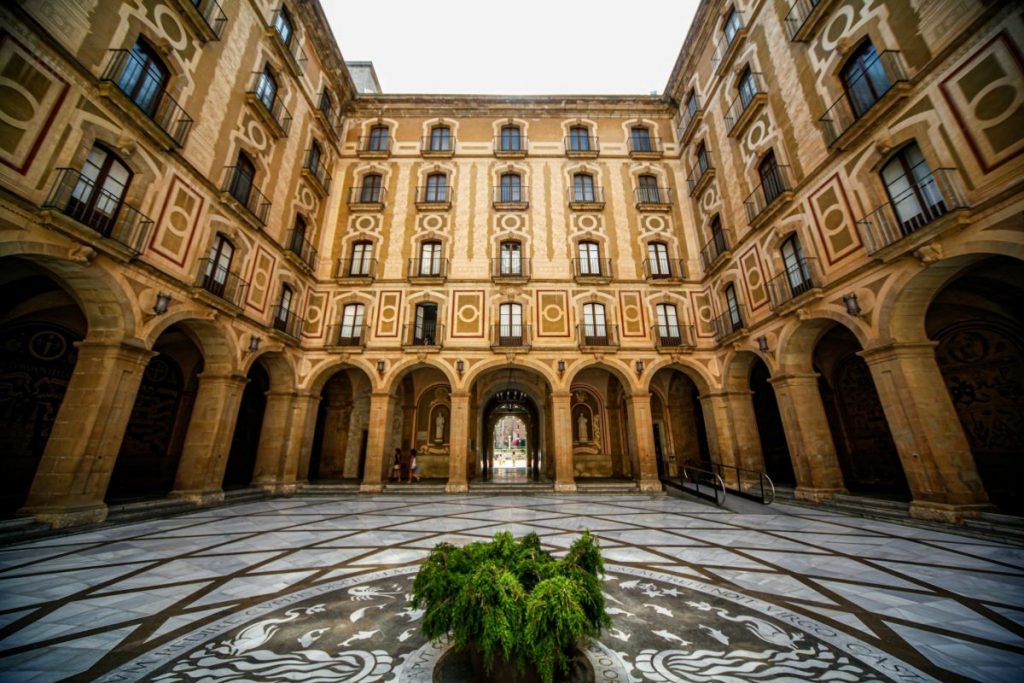
Museum of Montserrat
Another spot that is worth checking out is Montserrat’s museum, El Museu de Montserrat, which houses a significant portion of the artistic and archaeological patrimony of the monastery.
Located on the way up to Plaza de Santa María, it boasts 6 different permanent collections, with the oldest piece being an Egyptian sarcophagus from the 22nd century B.C. Here, you can see a wide range of exhibits, from the iconography of Santa María de Montserrat to paintings by artists as diverse as Dalí, Fortuny, or El Greco.
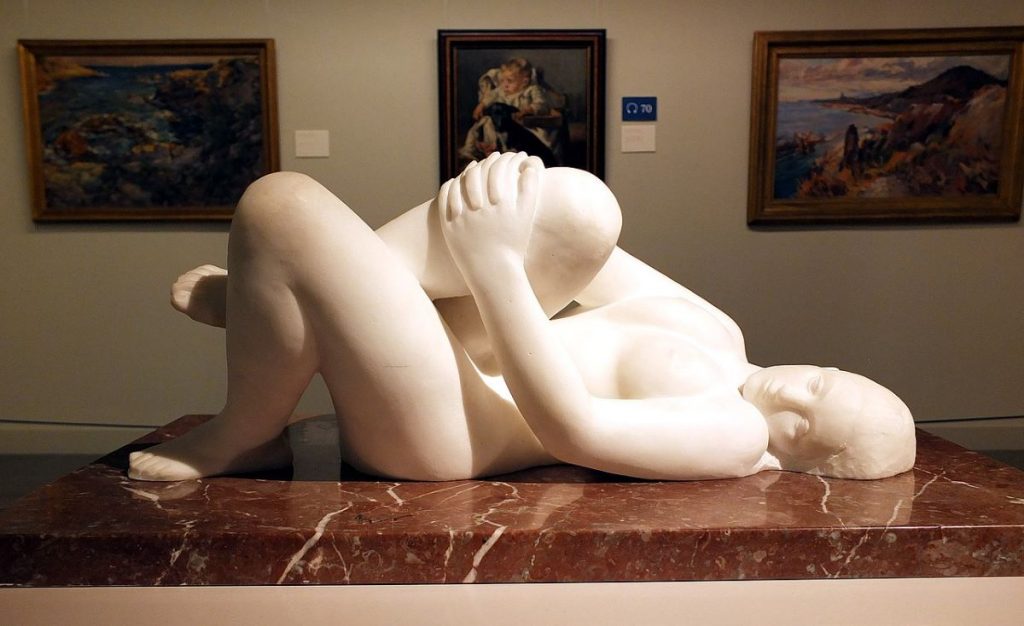
Hikes
For those looking for adventure, Montserrat offers a number of trails where you can appreciate the peculiar, breathtaking landscape.
The difficulty of the routes range from easy to moderate, lending options for every type of hiker – from those who are just starting out, to more experienced excursionists.
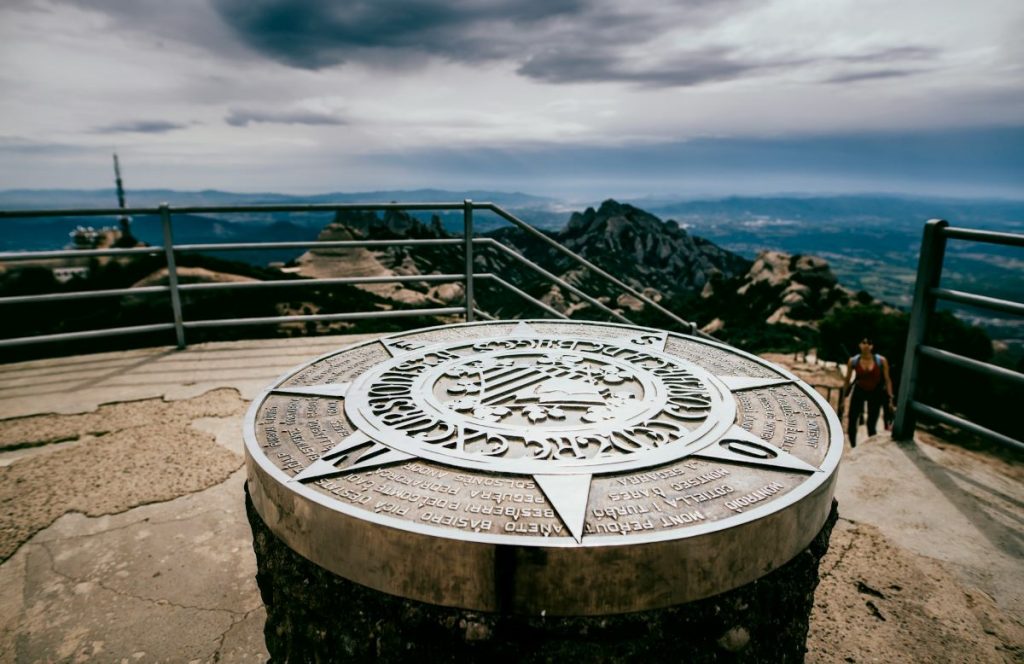
Easy/Moderate:
- For those looking for a less strenuous option, we recommend hiking up to La Creu de Sant Miquel, which is approximately 1hr to 1.5hrs (roughly 3km round-trip) and provides panoramic views of the monastery and surrounding areas.
- Another moderate option is to take the Camí de la Santa Cova, which is a scenic path that leads you to the Holy Cave, where La Moreneta was found, and features beautiful chapels and statues along the way. The trip will take around 1hr and is approximately 2km round-trip, though it is a bit steeper than La Creu de Sant Miquel.
Moderate/Difficult
- For those who are looking for a longer and more difficult trajectory, we recommend hiking up the Sant Jeroni trail, which will lead you up to the highest peak of Montserrat at 1,236 meters (4,055 feet), and offers panoramic views of Catalonia and even the distant Pyrenees.
- The duration is around 3hrs, and is approximately 7.5km round-trip.
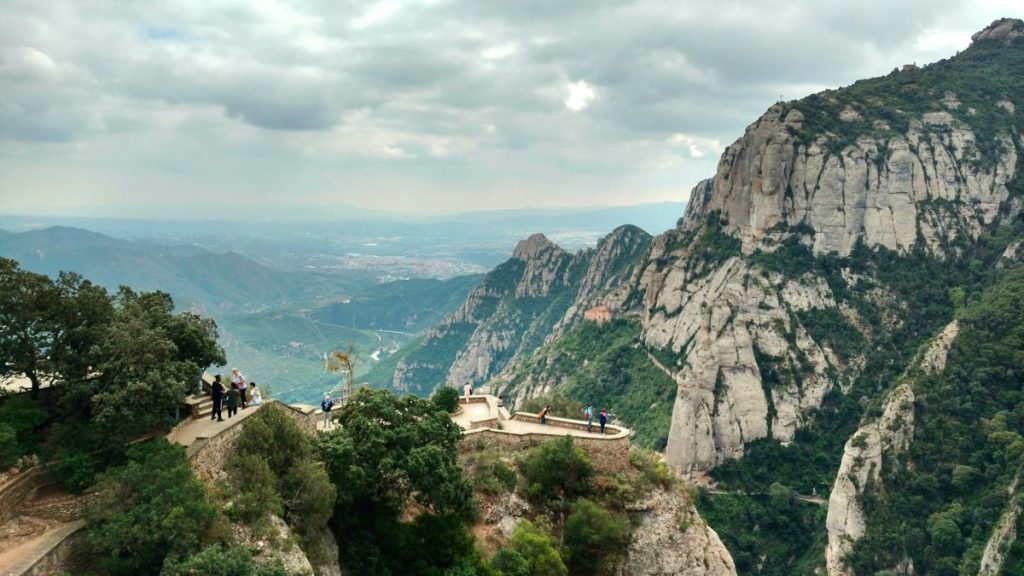
Farmer’s Market
Montserrat’s mercadillo (farmer’s market) situated near the Monastery, is composed of charming stalls that showcases the rich agricultural heritage of the region. Despite being relatively small in size, Montserrat and its surrounding areas produce various notable products.
- For example, you’ll be able to find everything from Olesa de Montserrat’s renowned extra virgin olive oil to vilamerics, a variety of chickpea from Monistrol, or even tomàquet de Montserrat, the region’s emblematic pink-hued tomato.
- You’ll also find a wide range of local cheeses, many of which are made from goat’s milk. Be sure to try requesón or mató, two catalan cheeses of the region which are both featured in Catalonia’s oldest preserved cookbook, the Sent Sovi.
- Other notable products include cocas (typical Catalan flatbreads), mountain bee honey, and Aromes de Montserrat –a locally-made liquor which combines twelve different herbs, distilled carefully in copper alembics and naturally matured in oak barrels.
Insider Tip: Stock up on local goods at the stalls and then take them to the picnic area for a locally-sourced outdoor lunch.

Where to eat in Montserrat, Spain
Restaurant Abat Cisneros
If you’re looking for a sit-down lunch spot in Montserrat, head to Restaurant Abat Cisneros, which is housed inside a building that used to be the stables for the monastery in the 16th century.
They feature a repertoire of classic Catalan dishes, you can opt for their fixed menu or go a la carte.
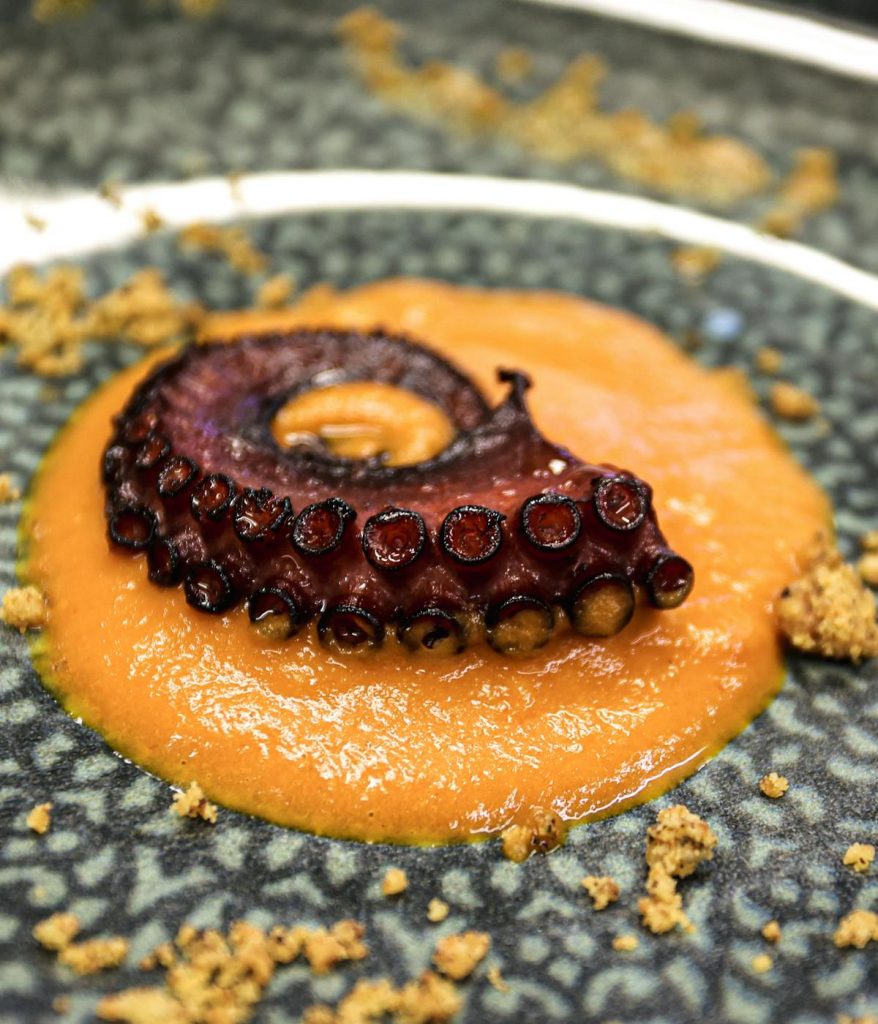
BO2
If you made the journey by car, we recommend heading over to the village of Monistrol de Montserrat to try BO2 – a spot that offers an inventive approach to tapas.
On the menu you’ll find items that harmoniously blend Catalan flavors with international influences like black cod fritters with kimchi, stilton croquettes with a pedro ximénez reduction or even a rice dish with butifarra, foie, and truffle.
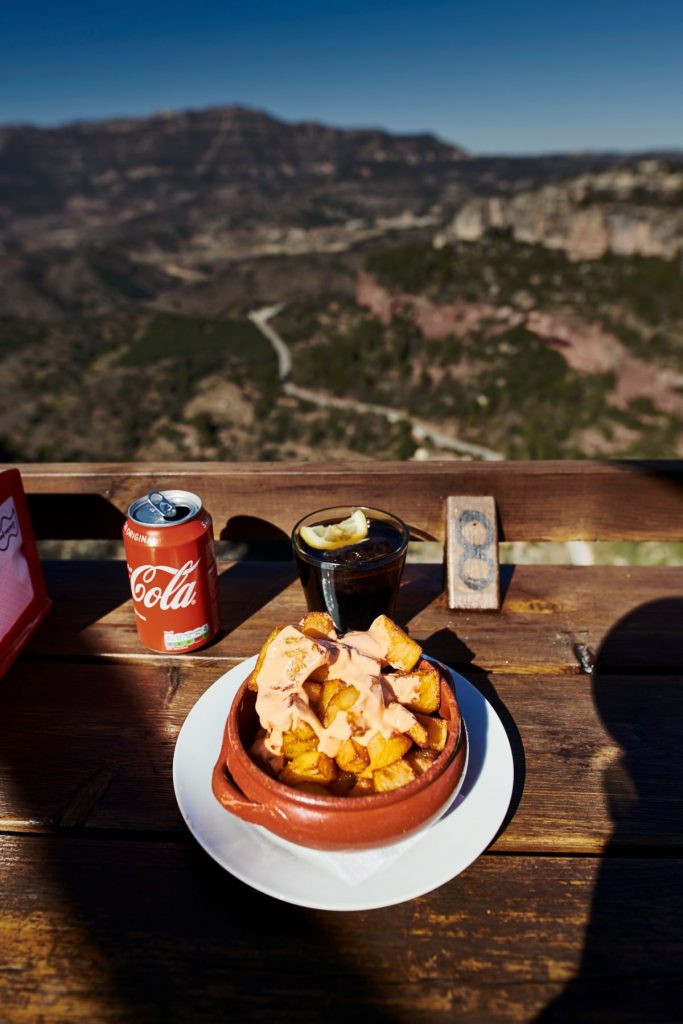
Casual Dining
For more casual dining options, head to Montserrat’s Cafeteria, Bar de la Plaça, or the Montserrat Buffet where you’ll find a selection of prepared dishes, sandwiches, cakes, snacks, and drinks.
You can also opt to make use of the picnic area and enjoy the magnificent views over the mountain whilst having your meal al-fresco.
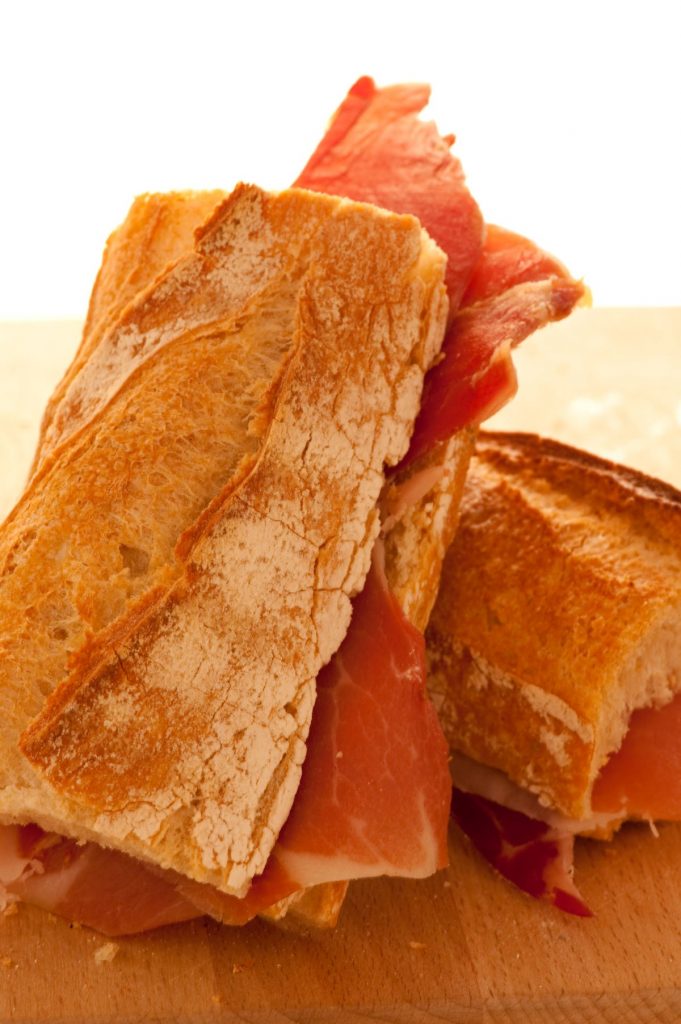
Wineries
The Montserrat region is also home to several excellent bodegas, which produce a variety of high-quality wines, benefiting from the unique terroir and climate of the area.
If you are interested in learning more about cava, join us on our Montserrat & Cava Tour, where you’ll learn all about the cava production process from start to finish by visiting a local family-run cava winery. You’ll also cap off the visit with a home-made lunch by the Bodegas’ owners, and of course, indulge in some of their excellent wines.
Alternatively, if you prefer to visit on your own, check out the following wineries, which also do guided tours and tastings:
- Oller del Mas
- Finca Ca n’Estella
- Mas de Sant Iscle
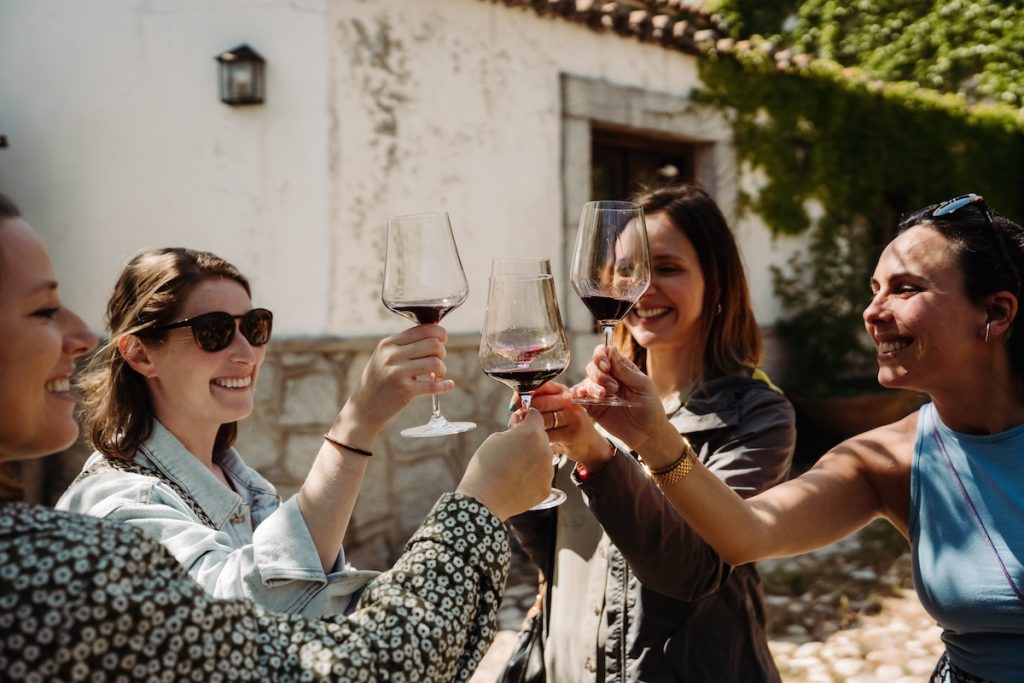
Update Notice: May 27, 2025
Whether you’re here for the views, the spiritual heritage, or the wine, Montserrat, Spain has something for everyone—and our Montserrat Day Tour from Barcelona lets you experience it all in one unforgettable day.
